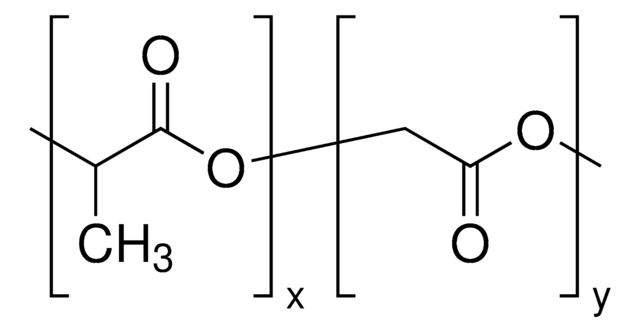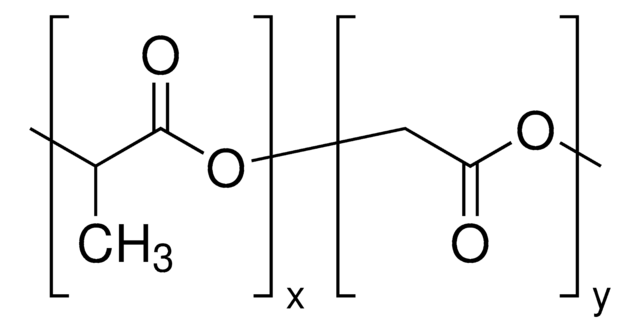908533
Poly(D,L-lactide-b-glycolide) lactide:glycolide 50:50
diamine, viscosity 0.035 dL/g
Synonym(s):
Amino-functionalized PLGA, NH2-PLGA-NH2, PLGA diamine
About This Item
Recommended Products
form
powder or chunks
feed ratio
lactide:glycolide 50:50
color
white to tan
viscosity
0.035 dL/g
storage temp.
−20°C
Application
Storage Class Code
11 - Combustible Solids
WGK
WGK 3
Flash Point(F)
Not applicable
Flash Point(C)
Not applicable
Choose from one of the most recent versions:
Certificates of Analysis (COA)
Don't see the Right Version?
If you require a particular version, you can look up a specific certificate by the Lot or Batch number.
Already Own This Product?
Find documentation for the products that you have recently purchased in the Document Library.
Articles
Professor Robert K. Prud’homme introduces flash nanoprecipitation (FNP) for nanoparticle fabrication, which is a scalable, rapid mixing process for nanoparticle formulations.
Our team of scientists has experience in all areas of research including Life Science, Material Science, Chemical Synthesis, Chromatography, Analytical and many others.
Contact Technical Service




